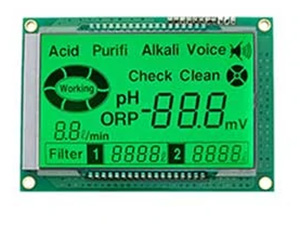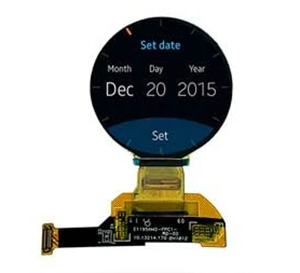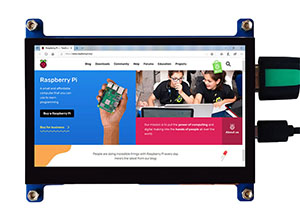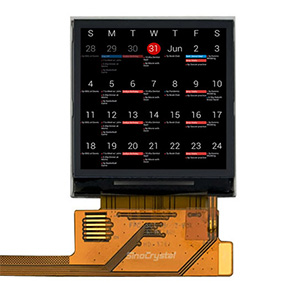1. The external leads of LCD module must not be connected wrongly, when you want to debug the LCM, please pay attention to the correct wiring, especially the positive and negative power supply wiring can not be wrong, otherwise it may cause overcurrent, overvoltage, burn the chip on the circuit, etc. on the LCD LCM components damaging phenomenon;
2. LCD module in use, access to power and disconnect the power supply, must be in the positive power supply after stable access to enter the signal level. Do not apply voltage on the signal line when the power is not connected or the power supply voltage is not stable, which may damage the IC and circuit in the LCM;
3. because of the physical characteristics of the liquid crystal material, the contrast of the liquid crystal will change accordingly with the change of temperature, so the products of Shanghai Haopu Electronics are in the interface VOUT end of the negative power lead to provide the system as the contrast adjustment. You can make a temperature compensation circuit, or simply arrange a potentiometer, and then return to the interface V0 side. 4;
4. It should not be used outside the specified operating temperature range and should not be stored outside the storage limit temperature range. If the ambient temperature of LCM is lower than the crystallization temperature of liquid crystal material, the liquid crystal body will crystallize, on the contrary, if the temperature is too high, the liquid crystal material will become isotropic liquid and destroy the molecular orientation, both phenomena will make LCM lose its display function;
5. When the display is under slight pressure, it will produce abnormal display. At this time cut off the power, wait a moment, re-power, that is, back to normal;
6. when the LCD device or LCD module surface fogging, do not power on the work, because this will cause electrode chemical reaction, resulting in broken lines;
7. COG or TAB form of IC is more sensitive to light, in the strong light environment, may cause the IC characteristics degradation, or even damage.


Maintenance and storage of LCD module
1. Only use isopropyl alcohol or ethyl alcohol to clean LCM, other solvents (such as water) may damage LCM.
2. If stored for a long time (e.g. more than several years)
We recommend the following ways.
1. in a polyethylene pocket (preferably with an anti-static coating) with the mouth closed;
2. Store between -10°C and +35°C. 3;
3. Store in a dark place, away from bright light. 4;
4. Never put any objects on the surface;
5. strictly avoid storing under extreme temperature/humidity conditions.


Sinocrystal focus on liquid crystal display, 15 years of industry experience, professional custom LCD LCD, industrial LCD, Raspberry Pi touch screen, TFT color screen, OLED LCD, segment code screen, character dot matrix module, graphics dot matrix module, etc.
Sinocrystal-LCD Display Expert Stable & Reliable
Official website address: www.displaysino.com
The 8 inch displays might be affected and delay for an accident.
New iPhone 13 Series will use On-Cell OLED Displays. And it that will be launched in the second half of this year will be exclusively supplied by Samsung Display (SDC)
This is the project management of how sinocrystal handle your customized project relate to displays.
Discover the key factors to consider when choosing an LCD display for your project, including size, resolution, interface, brightness, and customization options from a factory-direct manufacturer.
Discover the latest innovations in rugged LCD displays for harsh environments — from extreme temperature resistance to sunlight readability and waterproof designs. Factory-direct manufacturing with full customization.
A complete guide to LCD display connection methods, including SPI, I2C, RGB, MIPI, LVDS interfaces and physical mounting options. Learn how to connect monochrome and TFT LCDs to your development board or product housing.
This week, we had the pleasure of hosting an esteemed international client at our LCD display manufacturing facility in Dongguan. Guided by our team, the client visited key production areas such as the fully automated COG bonding line, backlight assembly area, full lamination workshop, and final product aging test section. They highly appreciated our production capacity, strict quality control, and engineering expertise. This visit strengthened mutual trust and set the stage for future collabora